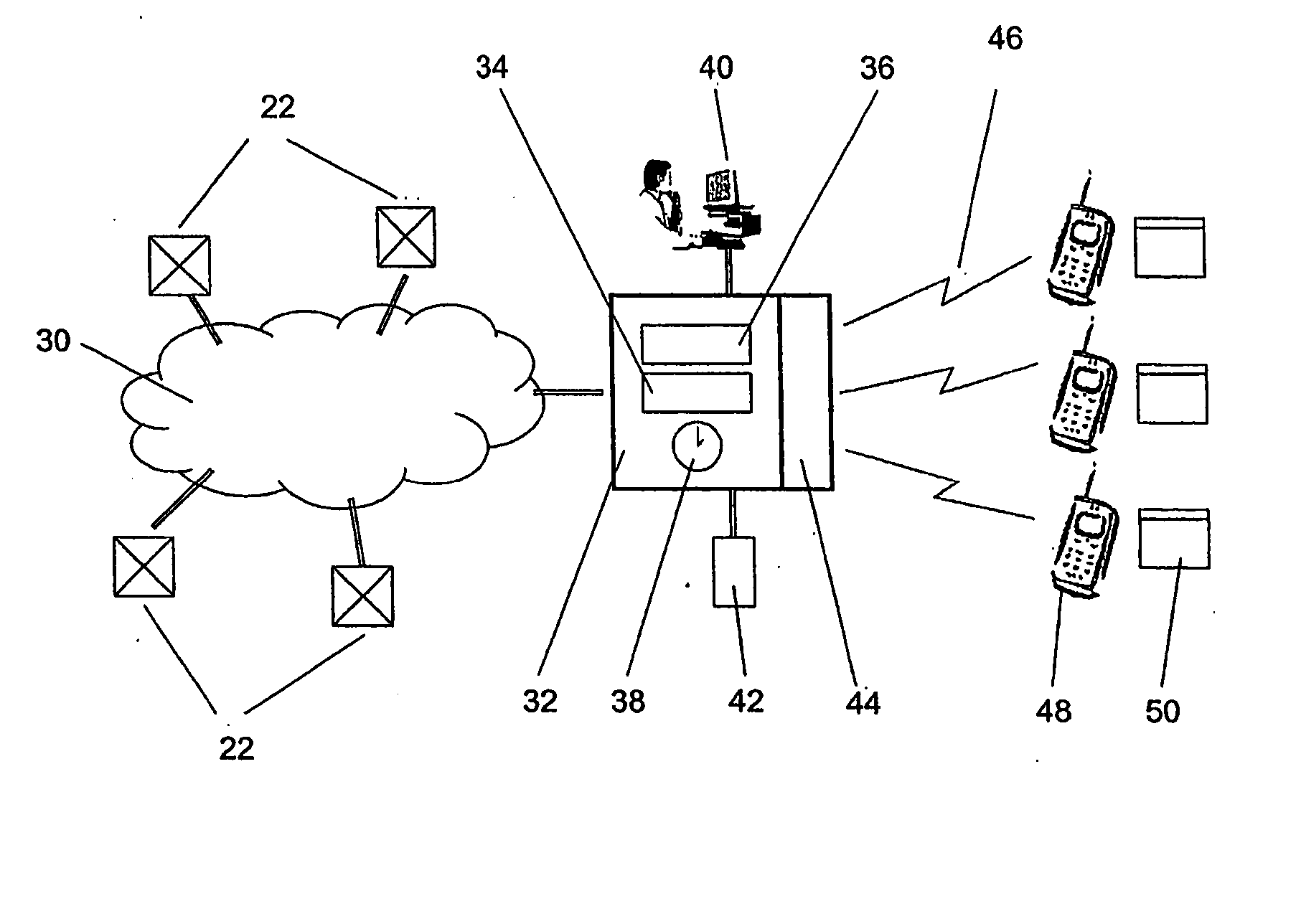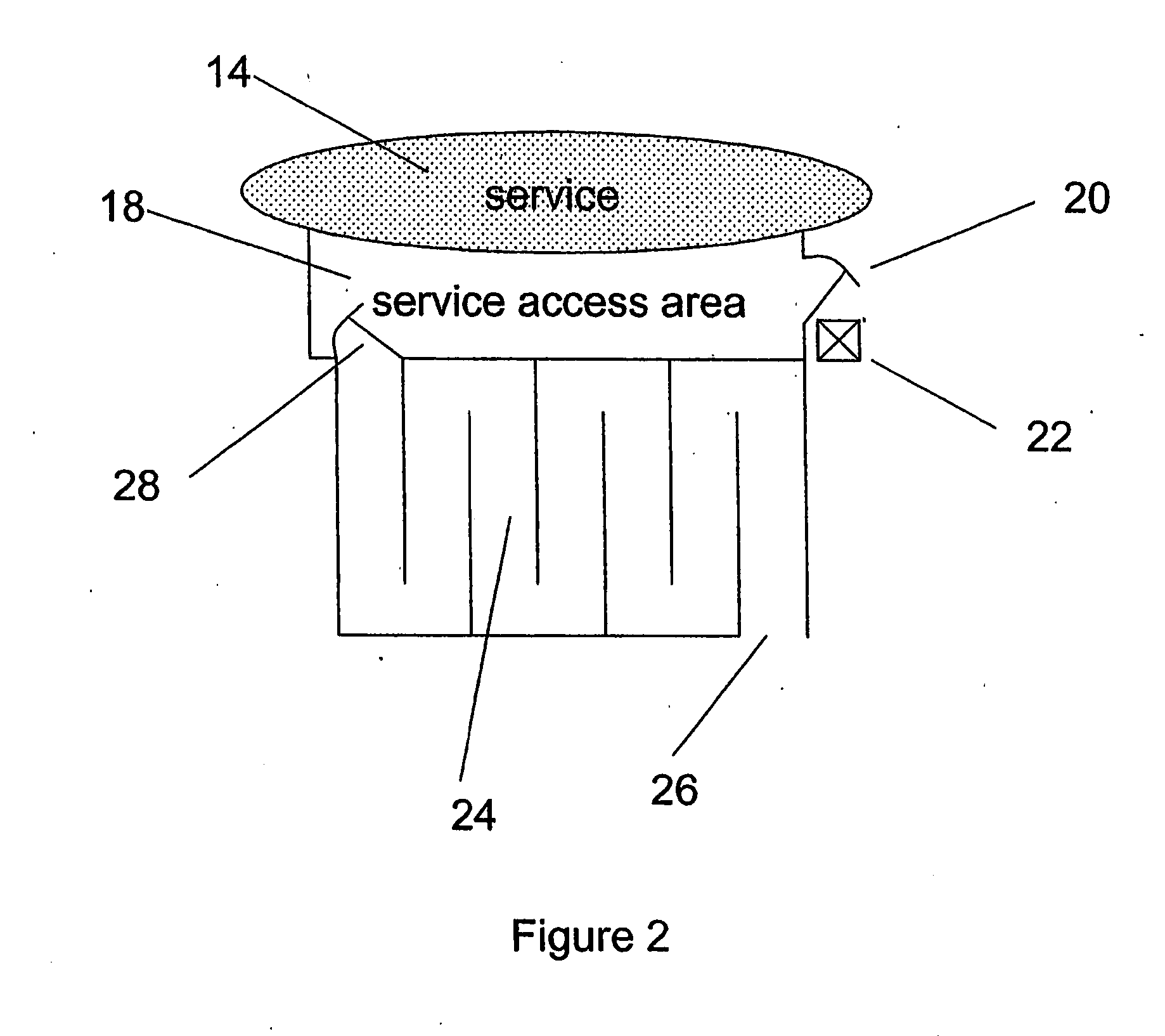Queue Management System and Method
a management system and queue technology, applied in the field of virtual queuing arrangement, can solve the problems of unpopular queues, unpopular service operators, unpopularity of queues, etc., and achieve the effect of avoiding secondary queuing
- Summary
- Abstract
- Description
- Claims
- Application Information
AI Technical Summary
Benefits of technology
Problems solved by technology
Method used
Image
Examples
second embodiment
A Second Embodiment
[0235] In the first embodiment described above, the information carrier bearing the group registration code and the group's personal identification tags 54 are all physical members contained within the same registration pack 50, and the registration code is such that the system can determine the tag values from the registration code.
[0236] In a second embodiment, the registration code does not have this property of allowing the system to determine identification tag values. This second embodiment may be convenient in the case where the identification tags take the form of RFID chips, and is essential where identification based on biometric data is used.
[0237] Given that tag values cannot be determined from the registration code, the central principle of this second embodiment is a tag recognition or creation step prior to (or simultaneous with) group registration.
[0238] Thus in this embodiment a group obtains its registration pack 50 in the normal way. This pac...
PUM
 Login to View More
Login to View More Abstract
Description
Claims
Application Information
 Login to View More
Login to View More - R&D
- Intellectual Property
- Life Sciences
- Materials
- Tech Scout
- Unparalleled Data Quality
- Higher Quality Content
- 60% Fewer Hallucinations
Browse by: Latest US Patents, China's latest patents, Technical Efficacy Thesaurus, Application Domain, Technology Topic, Popular Technical Reports.
© 2025 PatSnap. All rights reserved.Legal|Privacy policy|Modern Slavery Act Transparency Statement|Sitemap|About US| Contact US: help@patsnap.com



